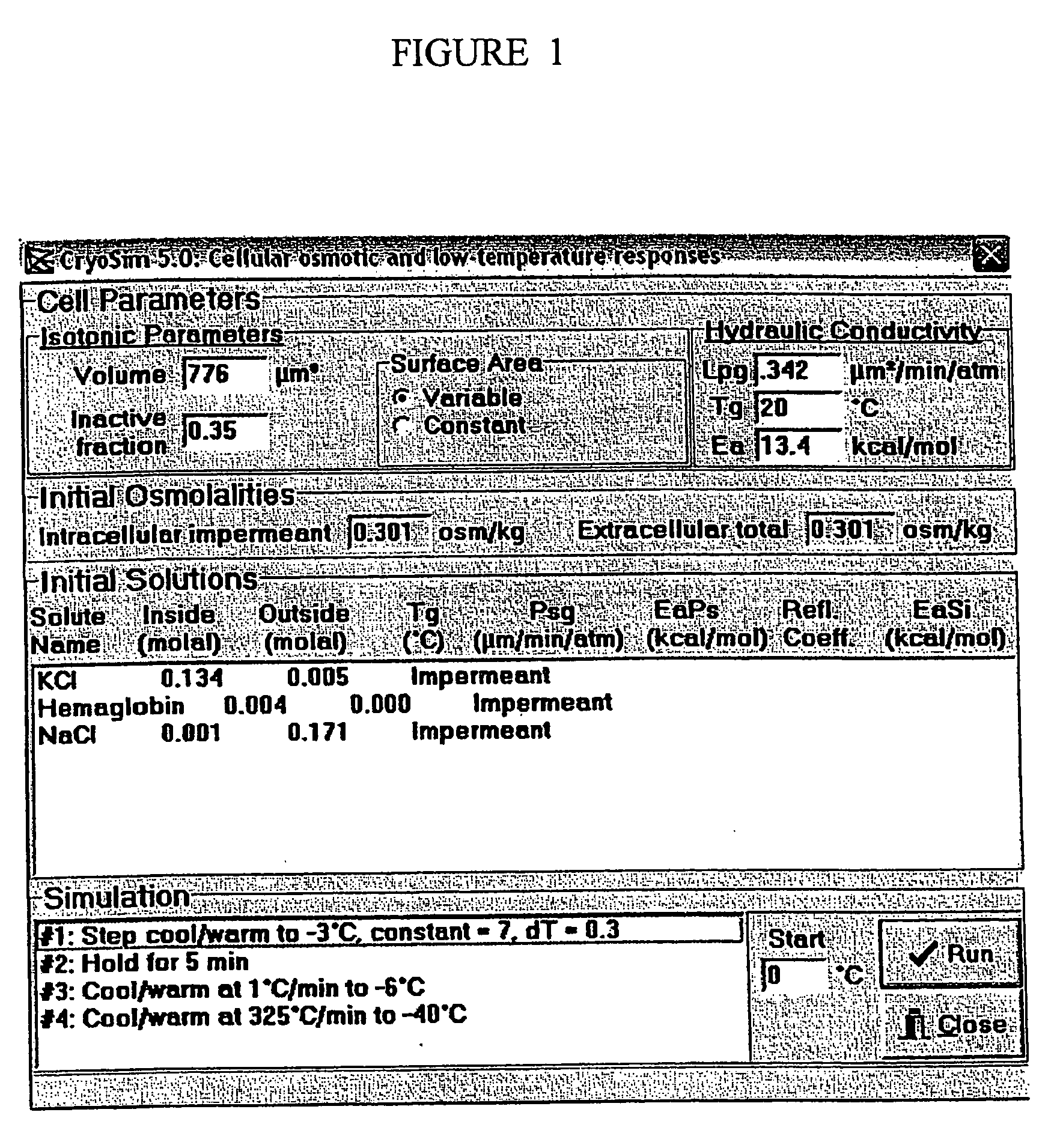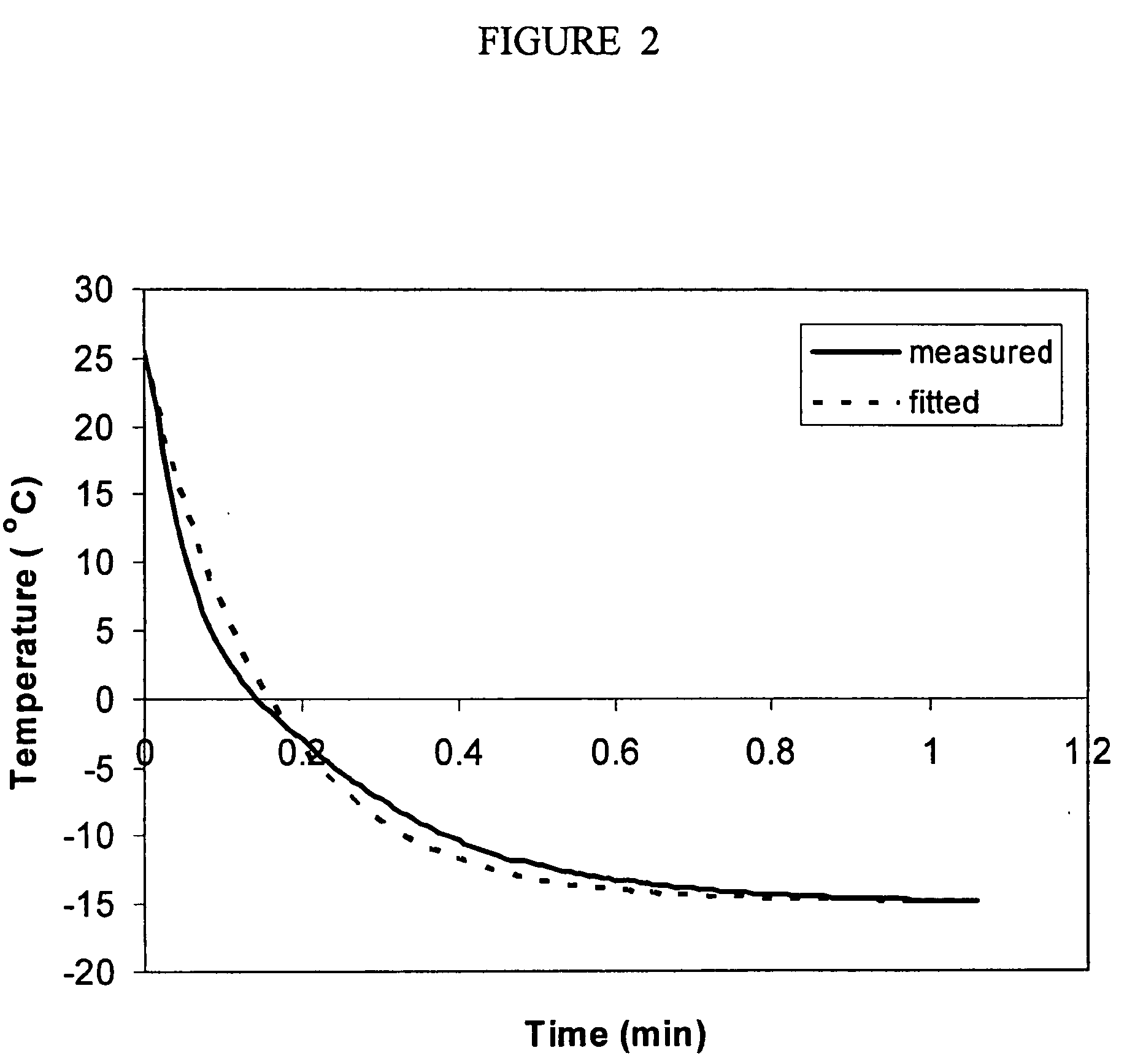Method of cryopreserving cells
a cryopreservation and cell technology, applied in the field of cryopreservation, can solve the problems of limited dmso use, unoptimized cooling profiles, and generally less than optimal recovery
- Summary
- Abstract
- Description
- Claims
- Application Information
AI Technical Summary
Benefits of technology
Problems solved by technology
Method used
Image
Examples
example 1
Theoretical Design of a Cryopreservation Protocol
1.1 Introduction
[0131] The cellular responses to the formation of ice in surrounding solution are largely dependent on the movement of water across the plasma membrane. Ice formation causes osmotic imbalance across the cell membrane forcing water out of the cell to maintain equilibrium with the extracellular solution. The properties of the cell membrane, specifically the osmotic parameters, as well as the solution thermodynamics of the intracellular and extracellular solutions govern these changes in cell volume. The osmotic parameters can be used in simulations to theoretically model cellular responses to low temperatures. Simulations also provide precise results regarding changes in cell volume and the amount of supercooling. These results can then be used for comparisons between cryopreservation protocols and for comparison between different cell types which may be present in one tissue. Ultimately, simulations allow for unlimit...
example 2
Experimental Correlation and Optimization of a Theoretically-Designed Cryopreservation Protocol
2.1 Introduction
[0143] The simulations performed in Example 1 predicted that subzero hold temperature and time spent at that temperature were critical variables in the optimization of cryopreservation protocols. In order for simulations to be used in cryopreservation, the predictions of simulations were tested empirically. The purpose of this example was to explore the range of subzero hold temperatures and time spent at those temperatures. Two-step cooling experiments were conducted with TF-1 cells and cooling profiles leading to high or low survival were compared with those that were theoretically predicted in Example 1 to have high or low cell survival. Membrane integrity was used as an assay for freeze-thaw injury. Cooling profiles leading to high or low recovery were compared with those that were theoretically predicted.
2.2 Materials & Methods
TF-1 Cell Culture
[0144] TF-1 cells...
PUM
 Login to View More
Login to View More Abstract
Description
Claims
Application Information
 Login to View More
Login to View More - R&D
- Intellectual Property
- Life Sciences
- Materials
- Tech Scout
- Unparalleled Data Quality
- Higher Quality Content
- 60% Fewer Hallucinations
Browse by: Latest US Patents, China's latest patents, Technical Efficacy Thesaurus, Application Domain, Technology Topic, Popular Technical Reports.
© 2025 PatSnap. All rights reserved.Legal|Privacy policy|Modern Slavery Act Transparency Statement|Sitemap|About US| Contact US: help@patsnap.com



